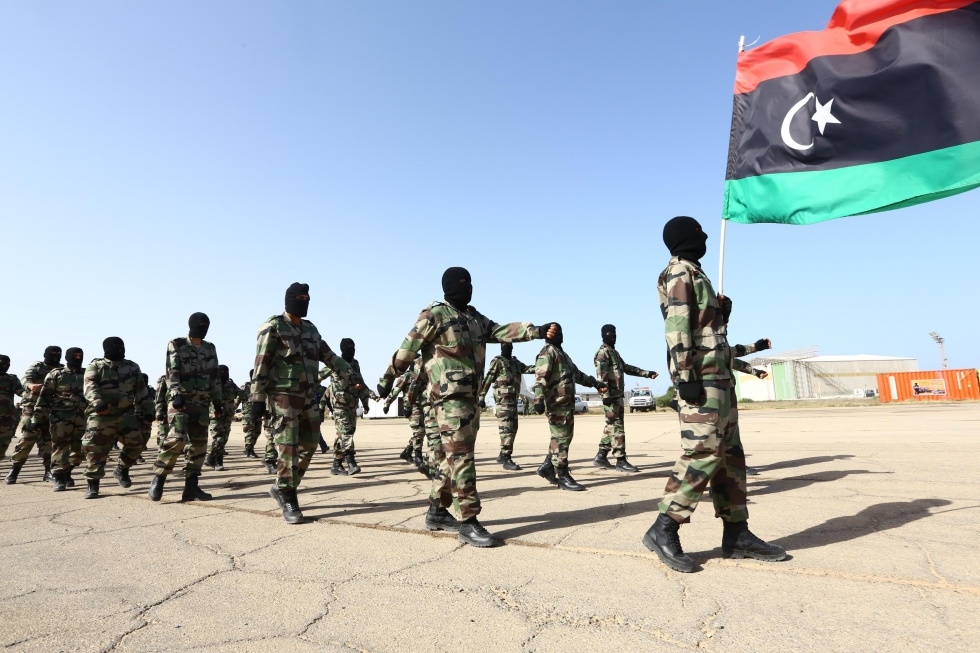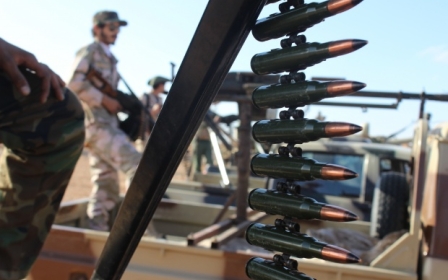ANALYSIS: Libya's civil war focuses on control of key oil ports

Libya Dawn’s offensive to capture the country’s eastern oil ports is the one of the biggest operations so far in the six-month war between the country’s two rival governments, and potentially the most decisive.
The attack was launched on Saturday by a force of more than 300 vehicles, mostly armed pickup trucks, pushing east from bases around Sirte heading for the terminals.
Punching along the coastal highway, the offensive aims to capture Es Sidre, the country’s largest oil terminal, and Ras Lanuf its largest refinery, held by Libya’s internationally recognized House Of Representatives (HOR), based in Tobruk.
Battlefield reports are confused, with the Misratan Led Alliance (MLA) of Libya Dawn, commanded by the General National Congress (GNC) in Tripoli, saying it has reached the “gate” of Es Sidre.
The Tobruk government’s air force said it had hit Libya Dawn targets with bombers and attack helicopters near Bin Jawad, 20 miles west of the port. Meanwhile, it closed the two ports, declaring Force Majeure, a legal term that exempts them from liability due to circumstances beyond their control.
While both sides dispute who is winning a battle now into its third day, neither disputes the importance of the ports, which are Libya’s key strategic asset. Ninety percent of the country’s revenue comes from oil exports, and who controls the ports controls the finance.
Libya Dawn’s offensive appears to be in reaction to statements last week by HOR prime minister Abdulla al-Thinni that he was moving oil assets out of reach of the GNC.
Until now, Libya’s oil income has been paid to the central bank, which remains in Tripoli. But Thinni said moves would start to ensure foreign customers paid for oil through a different system, cutting the central bank out of the process.
Thinni’s move is possible because the HOR is the internationally recognized government, and thus owner of Libya’s oil income. Libya Dawn knows it cannot sell the oil, even if it takes the ports, unless the UN changes Libya’s recognition status. But holding the ports would give it control over how much is exported, important leverage in any future power-sharing agreement.
The offensive is not an easy undertaking. Libya Dawn are restricted to the terrain around the single east-west highway leading to the ports, and lack cover, making their units vulnerable to air attack. The ports themselves are defended by the Petroleum Facilities Guard, a force notionally controlled by the defence ministry.
In June the guard ended a year-long strike which had closed the four main eastern ports, an action which cut oil production from 1.45 million barrels a day to 200,000. It has vowed to defend the ports, while distancing itself from Al Thinni’s operations to halt the Libya Dawn advance west of those ports.
To mount the oil ports offensive, Libya Dawn rallied units from other fronts. Misrata’s so-called Third Force moved brigades up from bases in Sebha, capital of the southern Fezzan province, joining with the powerful Misratan Halbus tank brigade along with tribal forces from western Libya. The HOR accused Libya Dawn of including two brigades from Ansar al Sharia, a militia blacklisted last month by the UN as a terrorist formation. There has not, however, been any confirmation on this from Libya Dawn.
In response Thinni’s government launched an attack of its own at the other end of the country, with pro-HOR militias pushing for control of the Libya Dawn controlled Ras Adjir border post with Tunisia.
Ras Ajir is, for the GNC, as strategically vital as the oil ports are for the HOR, because it guards the only road link with the outside world controlled by the congress.
A weekend of confused fighting saw HOR forces claim to have taken the post, only for Libya Dawn to insist it had maintained control, posting photographs of senior Misrata commander Salah Badi near the crossing on Monday morning.
The twin offensives take place amid a war fast hardening into firm front lines. In eastern Libya, the HOR government controls most of Cyrenaica, where the bulk of Libya’s oil fields lie, with its forces laying siege to militias in Benghazi and the coastal town of Derna, where the United States says the Islamic State (IS) group now has a presence.
War in the West
In western Libya, the picture is more confused. Libya Dawn took control of Tripoli in the summer, with the withdrawal of Zintan units in August.
Since then, the two sides have battled along an uneven front running south of Tripoli, parallel with the coast to the border. Militias from a string of coastal towns, including Zawiya, Sabratha and Zuwara have sided with Libya Dawn, while tribes from the interior including the Warshefani have backed the HOR, with Zintan the most powerful.
For several weeks fighting on this front line was concentrated on the town of Kikla, south of Tripoli, from which Libya Dawn forces withdrew last month.
The key strategic point in the West is al Wattiya air base, a sprawling facility in the desert south of the front line and held by Zintan units. For several weeks it has been home to air force bombers who announced their arrival with strikes on Tripoli’s main airport.
Libya Dawn has mounted attacks to capture it, so far without success, and the handful of jets based there are launching daily attacks on Dawn positions.
Zintan and its allies have meanwhile launched offensives of their own, both towards Ras Adjir and against Sabratha half way between the border and Tripoli.
Battles earlier this month saw claims that a Dawn militia in Zawiya had defected, and pro-HOR units capturing al-Ajalat, a village close to Sabratha. But as so often in this see-saw war, Libya Dawn counter attacked and regained the village, stabilizing the line.
Casualty reports are incomplete, but it appears several hundred fighters have been killed in recent weeks, and thousands of civilians have fled, part of the 400,000 Libyans the United Nations says are homeless as a result of the fighting.
Commanders on both sides are frustrated by the limitations of their forces: Most combat units are militias, with little formal training and lacking the structure for co-ordinated operations. They have few tanks or armoured vehicles, and lack the support services and logistics to mount long-term operations, with ammunition shortages seeing many offensives grind to a halt within days. Artillery support mostly consists of inaccurate grad rockets, denying both sides the ability to concentrate bombardments.
In the west, the numbers of combatants are evenly matched, with numbers for each army fluctuating between ten and twenty thousand troops.
HOR commanders think air power will prove the trump card, allowing regular air strikes to deplete Libya Dawn’s manpower and supply bases, and giving HOR formations “eyes” over Dawn dispositions.
Libya’s air force has grown in recent months to between six and twelve jets, with Libya Dawn saying Egypt is supplying the hardware.
This is a small bomber force, but equally, Libya’s combat units are also small in number. Time will tell if the air units can, as their commanders insist, grind down Libya Dawn strength. One problem for Libya Dawn is the lack of air defence missiles, a consequence of a determined effort by the United States to collect Libya’s shoulder-launched rockets, so-called MANPADS, after the fall of Muammar Gaddafi in the 2011 revolution.
Meanwhile the United Nations continues efforts to end the fighting, announcing that peace talks, delayed from 9 December, will be held this week, on a day yet to be agreed. It comes after a warning on Friday by UN Special Envoy for the Sahel - a band of states stretching across North Africa - that Libya’s war may spill over its borders. The envoy, Ethiopian diplomat Hiroute Guebre Sellassie, said: “If the situation in Libya is not quickly brought under control, many states in the region could be destabilized.”
Despite the fighting, UN Special Libya Envoy Bernadino Leon remains optimistic. He announced the talks delay on December 8, after meeting with GNC leaders in Tripoli, saying: “We are convinced, and this has been very clear in the meeting tonight, that with these two or three more days we will finalize all the details and hopefully we will have fruitful meetings next week.”
Yet the two rival governments remain far apart, each insisting they be recognized as Libya’s legitimate authority as a condition for taking part in the talks. And with some of the heaviest fighting of the war now raging for control of the oil ports, there is little sign of a willingness to talk peace.
Middle East Eye propose une couverture et une analyse indépendantes et incomparables du Moyen-Orient, de l’Afrique du Nord et d’autres régions du monde. Pour en savoir plus sur la reprise de ce contenu et les frais qui s’appliquent, veuillez remplir ce formulaire [en anglais]. Pour en savoir plus sur MEE, cliquez ici [en anglais].




